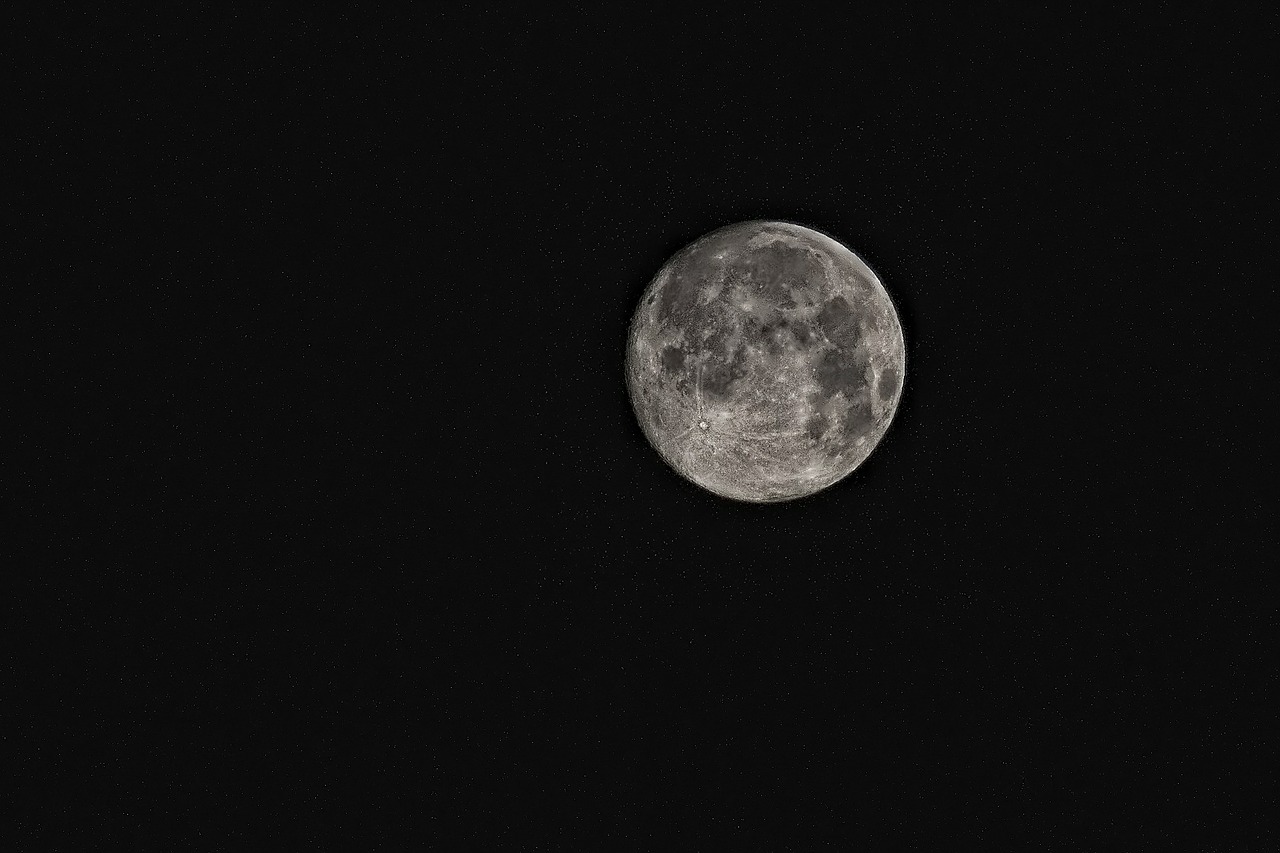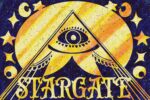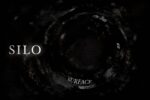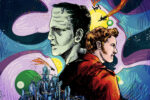“Dead Moon,” the third installment of the “Threshold” series by Peter Clines, was released this past Valentine’s Day. The novel is an Audible original, which means that it’s only available as an audiobook for the first six months of its publication.
“Dead Moon” takes place in the not-too-distant future, where the moon has been colonized, thanks to the creation of a space elevator that allows easy travel from Earth to the lunar surface. Although travel to the moon is easy, its atmosphere provides little to no breathable air, preventing people from establishing permanent homes on the moon. This abundance of unused land, which can’t be used for farming or housing, is instead used for a rather strange purpose: for burying the dead.
Clines has set up a futuristic landscape with all the tropes of an isolated, deep-space horror story (cf. “Alien”), spacesuits and environment-controlled habitats included. But he has also populated his world with thousands of dead bodies, dehydrated but preserved in the vacuum of space. It’s the perfect setting for the horror staple of the zombie.
After the novel introduces the main characters, setting and everyday practices of the caretakers who are responsible for burying the dead, a meteor hits the moon’s surface, breaking up the neatly manicured gravesites and the caretaker’s systematic routine. This meteor is what awakens the dead and, we find out later, is the sole tie-in to the greater “Threshold” universe.
Clines’ “Threshold” series has so far been a modern take on a Lovecraftian universe, a genre of horror that focuses on the unknown rather than gore, that’s populated with Old Gods and monsters and cults.
The “Threshold” series began with the novel “14,” which focuses on a mysterious apartment building in Los Angeles. A local cult constructed the building to prevent the world’s reality from slipping into a universe of Lovecraftian monsters that’s ruled by larger-than-life tentacled beings. The tenants of the building slowly come together to solve the mystery, culminating in an epic fight scene with villains both alien and mundane.
The second novel in the “Threshold” series, “The Fold,” follows a man with a beyond-genius IQ and eidetic memory as he investigates the mysterious science of a teleportation machine. This installment tries to tackle the hard science of a quantum teleportation machine in the context of Lovecraftian horror.
Turns out, the code used to run the teleportation machine was borrowed from the same cult that built the apartment building in “14.” Through his research, the main character discovers that people aren’t really teleporting but instead being replaced by versions of themselves from other universes. And in some of these universes, the Old Gods from Lovecraft stories reign.
I have been an avid fan of the “Threshold” series so far, and have listened to the audiobook of “14” probably close to 100 times. But that doesn’t mean that the series doesn’t have its flaws. Unfortunately, “Dead Moon” is no exception. While it mirrors many of the issues of Clines’ earlier stories, it also introduces new problems to the shared universe.
Setting
“Dead Moon” is the first “Threshold” story to not take place in California (though the main character’s name is California). Moving away from the established setting of the other stories in the series physically distances this installment from the overarching storyline.
For the setting of the moon to make sense, “Dead Moon” also takes place two centuries after the events in the previous two stories. It’s unclear how this new time period makes sense in the context of the “Threshold” series. In fact, we don’t hear about the organization established in “14” to protect the world from the Old Ones at all through this story, though it was a point of continuity in “The Fold.”
Female Characters
Previous stories have focused on gifted men, while “Dead Moon” follows a woman. This is great, but the character change does not go without problem.
Cline’s always includes weird sex-talk in all his stories. For instance, in “14,” a room is mysteriously set to 69 degrees Fahrenheit no matter the temperature outside. There’s a minute of awkward dialogue between the main character and his love interest about what men think of when exposed to this number.
Similarly, in “Dead Moon” there are a number of instances where there are strange propositions made to females regarding their sexuality. In one case, the main character and a male companion must race the clock to get back inside the habitat without dying of exposure to the vacuum of space. When they make it back inside, there’s discussion of whether they should cuddle naked, for warmth.
The women in Clines’ stories are also always described as objectively good-looking. In “14,” we meet one woman sunbathing topless and another in a sundress describing the sexual harassment she’ll likely get because of it. In “The Fold,” we meet a woman who is described as someone who could have gone into modeling, and whose bare torso plays a critical role in discovering the problems with the teleportation machine.
“Dead Moon” introduces us to a main character who was studying to be a ballet dancer, until puberty was too kind to her and she filled out in all the right places. The women of the “Threshold” universe are therefore, objectified ideals of real women.
Point of View
Clines always seems to include one short chapter from a different character’s point of view. This is presumably to establish information that the main character would not otherwise know. Often, however, the information isn’t strictly necessary and the change in viewpoint ends up disorienting the reader (or listener).
In “14”, a somewhat out-of-place chapter is narrated from the point of view of a tenant who doesn’t help his fellow neighbors solve the mystery. The tenant details her struggles with her credit score and the sexual harassment she experiences from her boss, neither of which factor into the rest of the story. It’s as if Clines went on an unrelated tangent just to make the audience feel sorry for this poor, objectified woman.
In “The Fold,” audiences learn in an early chapter how the transportation machine causes problems for those who use it; however, that knowledge is not pertinent until later in the story, and we never meet those characters again. Overall, the reader just gets confused and bothered by the story’s unconnected and loose ends.
“Dead Moon” is no different. One early chapter is told from the perspective of the son of the owner of the moon’s graveyard business. It sets up the idea that his presence leads people to act differently, and that the safety of the CEO’s son is paramount. Yet, much to the audience’s dismay, the story is never again told from this man’s point of view, and he stops being a major character early on.
Zombies
The biggest problem with “Dead Moon,” however, is its zombies. It’s not surprising that Clines would turn to zombies — many of his other works, which are not in the “Threshold” series, revolve around zombies. But for this series, they are unexpected antagonists.
The combination of zombies and Lovecraftian horror doesn’t really work. The zombies also feel a little shoehorned in. Initially, Clines had talked about “Dead Moon” as a book about zombies on the moon, with the third installment of the “Threshold” series being a separate story. The Lovecraftian backstory to the Ur-zombie in “Dead Moon” was not a significant part of the plot. It almost gives the impression that this zombie story existed, then the Lovecraftian monster was added as an afterthought in order to make the story fit in the theme of the “Threshold” universe.
The only thing that seems to tie “Dead Moon” in to the overarching universe is the Lovecraftian meteor-turned-monster that creates the zombies. Even then, we only have that information because the prologue and epilogue describe the monster’s intelligence and provide its motivation. Without these extraneous bits, there’s nothing inherently Lovecraftian about the story.
Clines’ storytelling style and choice of protagonists have been ongoing problems for his “Threshold” series. But apart from the series, “Dead Moon” alone struggles from substantially larger issues. Reliance on horror clichés rather than science as the basis for the overarching plot; moving away from the Lovecraftian alternate universe and defense organization setup; and switching the setting from 21st century California to 23rd century moon creates a story that’s unrecognizable.
I’m still overall hopeful for the series — Clines has shown that he can work with this content and craft stories that, if not impeccable, are at least eminently listenable. Forgoing the zombies of his other works and focusing on established shared-universe constraints can help his next “Threshold” story excel.
















